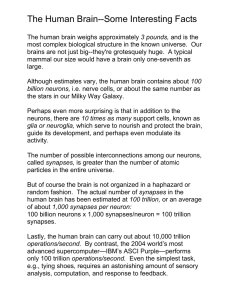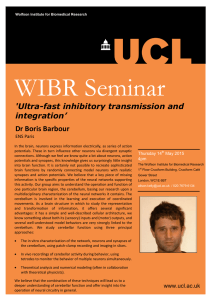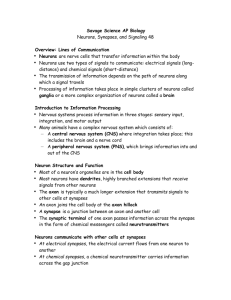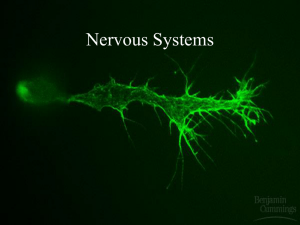6.5 Neurons and synapses assessment
advertisement
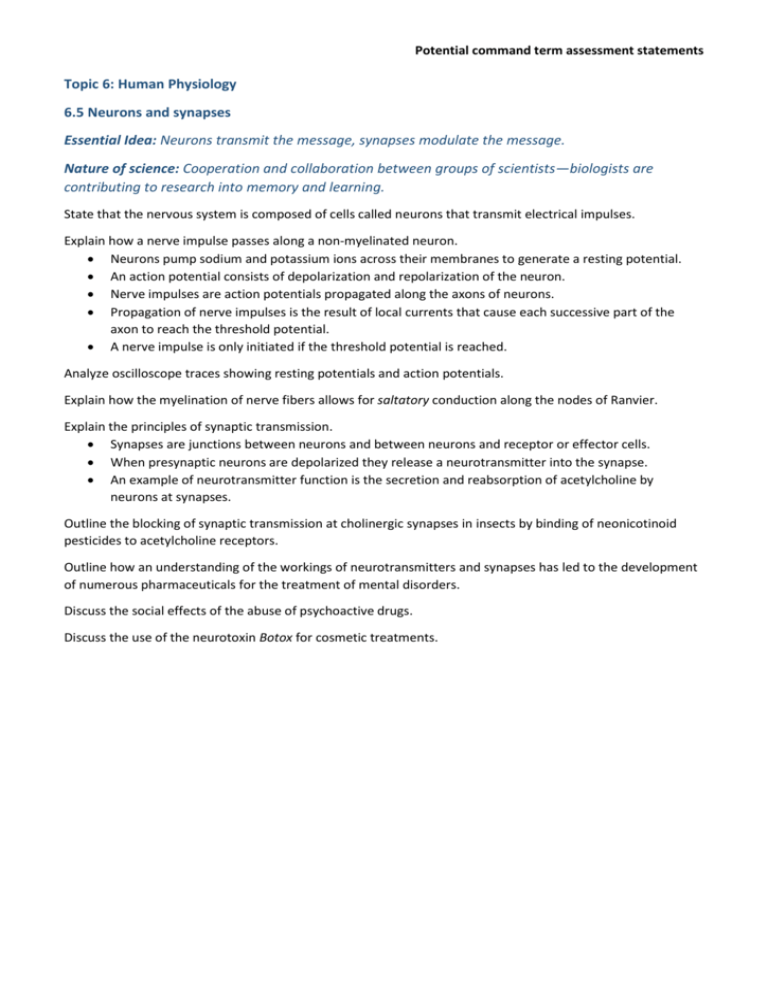
Potential command term assessment statements Topic 6: Human Physiology 6.5 Neurons and synapses Essential Idea: Neurons transmit the message, synapses modulate the message. Nature of science: Cooperation and collaboration between groups of scientists—biologists are contributing to research into memory and learning. State that the nervous system is composed of cells called neurons that transmit electrical impulses. Explain how a nerve impulse passes along a non-myelinated neuron. Neurons pump sodium and potassium ions across their membranes to generate a resting potential. An action potential consists of depolarization and repolarization of the neuron. Nerve impulses are action potentials propagated along the axons of neurons. Propagation of nerve impulses is the result of local currents that cause each successive part of the axon to reach the threshold potential. A nerve impulse is only initiated if the threshold potential is reached. Analyze oscilloscope traces showing resting potentials and action potentials. Explain how the myelination of nerve fibers allows for saltatory conduction along the nodes of Ranvier. Explain the principles of synaptic transmission. Synapses are junctions between neurons and between neurons and receptor or effector cells. When presynaptic neurons are depolarized they release a neurotransmitter into the synapse. An example of neurotransmitter function is the secretion and reabsorption of acetylcholine by neurons at synapses. Outline the blocking of synaptic transmission at cholinergic synapses in insects by binding of neonicotinoid pesticides to acetylcholine receptors. Outline how an understanding of the workings of neurotransmitters and synapses has led to the development of numerous pharmaceuticals for the treatment of mental disorders. Discuss the social effects of the abuse of psychoactive drugs. Discuss the use of the neurotoxin Botox for cosmetic treatments.



